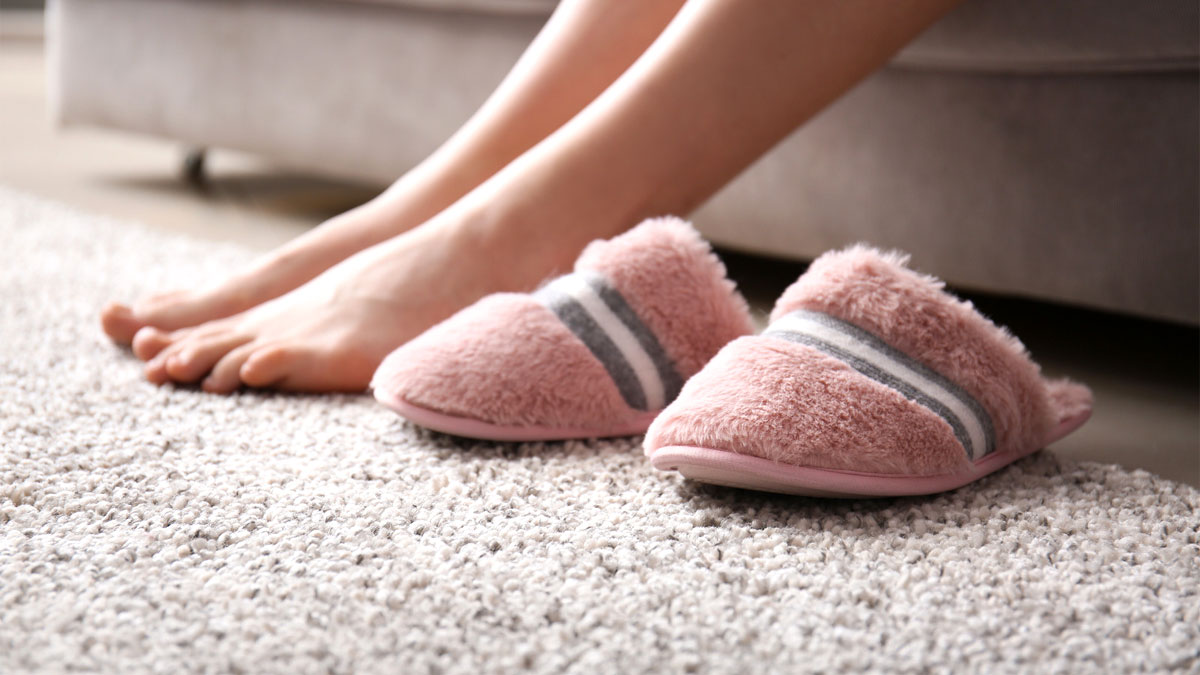One of the biggest mistakes people make when exposed to bed bugs is to assume the infestation will be restricted to their bed. In reality, infestations can happen anywhere in the house.
The only reason these pests tend to congregate in the bedroom is because that’s where the food is. But this can pose a serious problem if you’re trying to exterminate the infestation in the bedroom and miss other hideouts.
Knowing that bed bugs can live in places other than the bed, the question of where else they might be invariably arises. Today, we’re going to look at one possible hiding place, how viable that place is for a bed bug’s needs, and what to do if you find one there.
Can Bed Bugs Live In Carpet?
Of the many places you might expect to find bed bugs, carpets are probably not one of them. Of course, it’s very possible it could be a different bug, but what if it isn’t?
After all, bed bugs are supposed to hang out where people are known to rest or sleep, right?
Why Would There Be Bed Bugs in the Carpet?
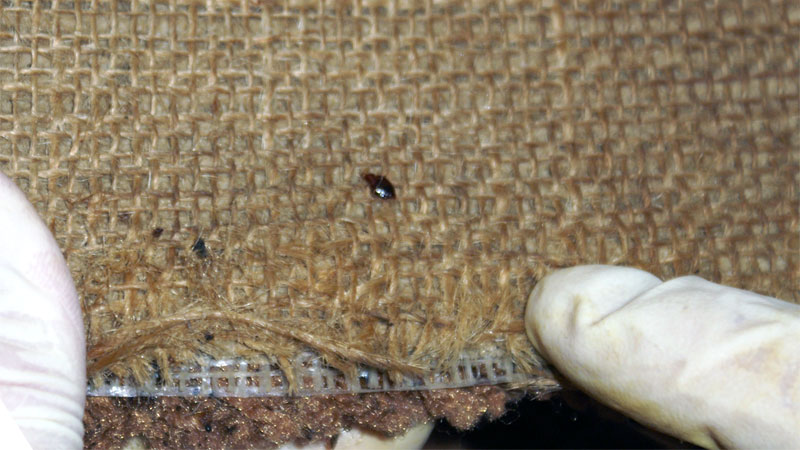
Bed bugs are pretty pathetic when it comes to mobility. They’re not very good runners, can’t fly or jump, and their ability to climb can be somewhat limited due to a poor grip.
Of course, on a level surface, they can be pretty fast and they do have the ability to climb as long as the surface is textured. But carpets are a veritable obstacle course, so why choose to be there?
The simple truth is that bed bugs may use your rug or carpet to hide if it’s within about eight feet of a place you like to rest. Alternatively, they may have found themselves flung there when you shook the sheets or disturbed something they were hiding in, such as dirty laundry.
Or perhaps you inadvertently brought bed bugs home and the item they were hiding in was placed on the floor, leaving them to find their way to your bedroom on their own. But even worse, bed bugs in the carpet could be a sign that you have an infestation growing out of control.
How Long Can Bed Bugs Live in a Carpet?
The length of time bed bugs live in carpet honestly depends upon their age. A nymph can only survive a short amount of time in a carpet, as they require regular blood meals in order to develop their exoskeletons and advance to each instar.
Adults are different, however, as they are able to survive for months without a meal. This is why you could buy a house or rent an apartment that has been abandoned for close to a year only to discover bed bugs have been lying in wait that entire time.
Signs of Bed Bugs in the Carpet
So what if you think you might have bed bugs living in your carpet? What are the signs to look for? There are five telltale indicators that bed bugs are hiding in your carpet. Note that you might need a magnifying glass to make a positive ID due to their small size.
#1 – Adult Bed Bugs
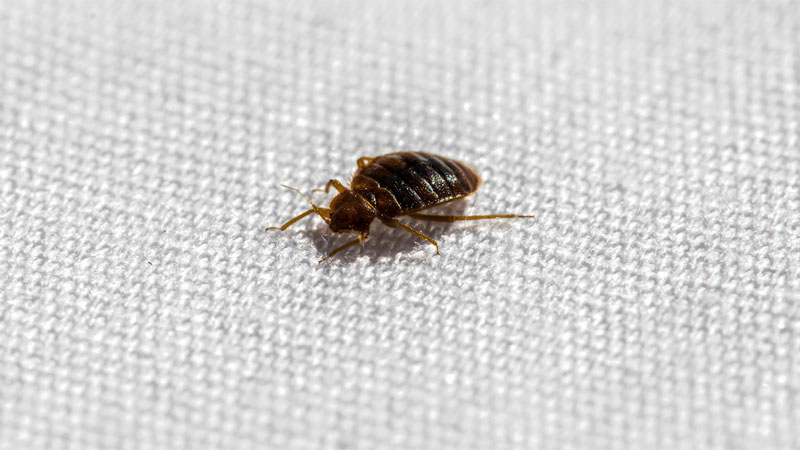
The first and most obvious sign is to spot an actual bed bug. It’ll try to escape into cover once it knows it’s been spotted so you’ll need to be quick.
One possible way to stop the bug in its tracks is to quickly slap a piece of clear tape over the bug. Of course, this could get a little sticky (pun intended) when you go to remove the tape from the carpet fibers. If this happens, just soak that spot in warm water to loosen the adhesive once you’ve identified the bug.
Bed bugs are pretty small, measuring from around 3/16 to 1/4 inches long (and there are two different species to watch out for) and have flat, rounded bodies.
If you caught one travelling across the carpet, it will attempt to take cover in the fibers. Otherwise they will usually try to hide in the edges and seams of the carpet rather than hanging out in the open.
#2 – Bed Bug Eggs
Bed bug eggs don’t take long to hatch, but that doesn’t mean you won’t spot them. The tiny eggs are whitish and oval in shape, measuring a mere 1/10 inch long. In fact, they can easily be mistaken for grains of salt until you take a closer look.
Depending on which of the two species you are unfortunate enough to be hosting, a single female can lay up to 50 or even 500 eggs in her lifetime! Thus you may want to examine your carpet carefully for signs of eggs if you have an existing infestation.
Again, you will most likely find them near the edges and seams.
#3 – Bed Bug Frass
First the salt, and now the pepper! Bed bug frass (poop) can look like tiny black specks of pepper. Not surprisingly, it’s easy to miss them when they’re not in your bed. The frass is a sign that a bed bug recently had a meal, and can be identified quite easily.
Collect the suspected poop onto a white paper towel and add a few drops of water. If it’s poop, the little granule will start dissolving and you’ll see a little red stain forming. Alternatively, you can gently press a damp paper towel over the suspected frass to get the same results.
#4 – Bed Bug Husks
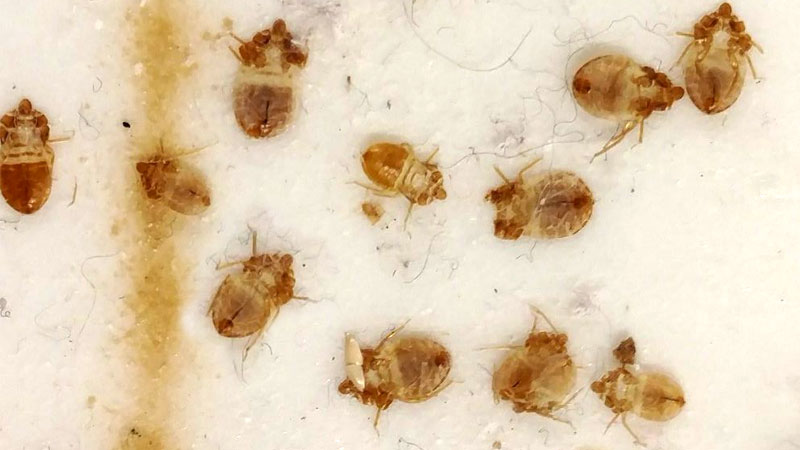
Between hatching and adulthood, bed bug nymphs must go through several instars. These stages involve molting and the little pest will leave behind an almost fully intact exoskeleton. These bed bug shells can be a bit of a shocker until you realize it’s not a living bug.
However, if you’re finding husks in your carpet, that means a nymph somewhere nearby was able to feed.
#5 – Bed Bug Nymphs
Speaking of nymphs, the hatching eggs give way to a white, slightly more elongated version of an adult bed bug. These nymphs must feed right after hatching and will soon die if they don’t get to feed.
However, if they somehow find a blood meal, their abdomen will become swollen and red, and they’ll begin to develop their exoskeleton. As these look like sesame seeds, it can be easy to miss them unless you’re actively looking for them or see one moving.
How to Get bed Bugs Out of Carpet Fibers
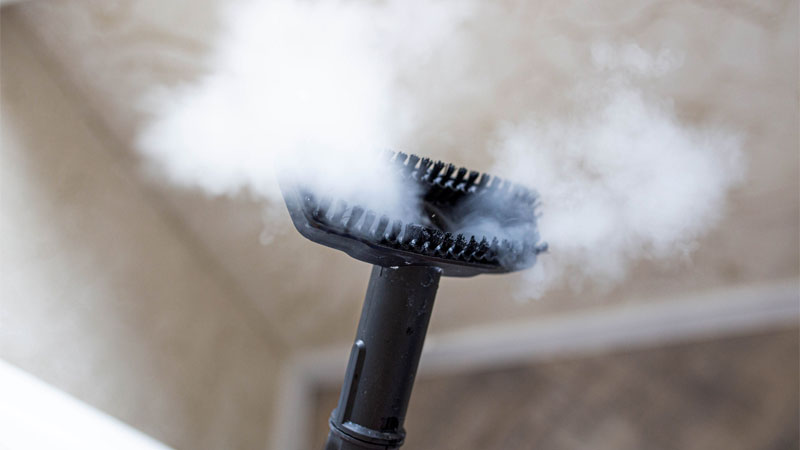
Okay, so you’ve spotted a bug in the carpet and confirmed it’s a bed bug – now what? This is a good indicator that you need to inspect your entire home to gauge the full extent of the infestation.
Meanwhile, there are several things you can do to deal with the bed bugs before resorting to an exterminator. For the best results try performing several of these tricks in order:
#1 – Declutter
Start by carefully removing clutter from the room. Examine things to the best of your ability and store them in airtight containers until you can verify they’re not infested.
If you have clothing or linens, be sure to carefully bag them up and dump them into a dryer set on high heat.
#2 – Vacuum
Once the floor is clear, grab the vacuum cleaner and give the floor a complete cleaning. Be sure to get all of the edges, as that’s where the critters are most likely hiding. This won’t eliminate the bed bugs, but there’s a good chance you’ll suck up a huge percentage of them.
Immediately empty the canister or place the bag into a sealable garbage bag. Better yet, if you use an empty canister and don’t pick up any large objects, you can dump the dirt and bugs into the toilet and flush them away. Just make sure to wash out the canister and filter with plenty of hot water to get any survivors.
#3 – Steam Cleaning
Heat is the ultimate bed bug killer, and a proper steam cleaner is truly a deadly weapon. A standard carpet cleaner may be able to dislodge bed bug eggs and suck the bugs up. The soap will help them drown faster in the canister.
However, the high heat of a commercial grade steam cleaner will cook bed bugs in all stages on contact. However, anything below 180 degrees will take a while to actually kill the bugs and their eggs.
#4 – Diatomaceous Earth (DE)
Food grade diatomaceous earth is an incredible bug killer. To us (and our pets), DE is merely a fine dust. However, for tiny critters such as arachnids and insects, it’s a minefield.
DE is made of the crushed fossil remains of diatom shells and are extremely jagged and sharp. It lacerates the bed bugs as they crawl over it, causing them to dehydrate and die.
While this method is extremely effective and safe, it’s time consuming. You’ll have to thoroughly dust the carpet and vacuum thoroughly 3 days later. Repeat this cycle for a month to make sure every last egg has hatched into the death zone.
- How to Get Rid of Hawks - March 8, 2024
- How to Get Rid of Pill Bugs (Rolly Pollies) - March 1, 2024
- How to Get Rid of Groundhogs (Woodchucks) - February 5, 2024

